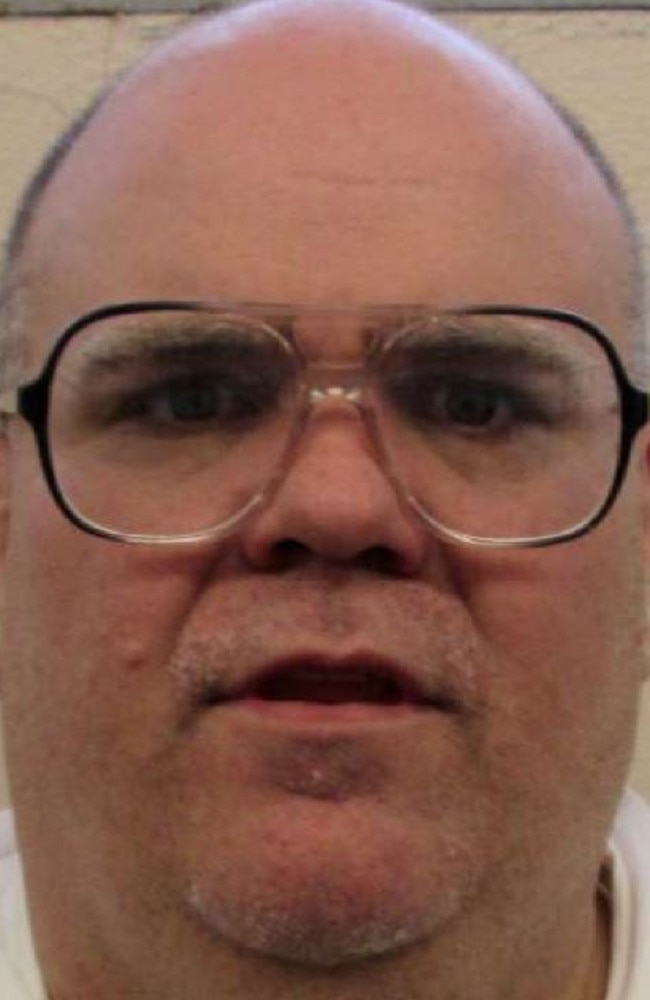Death row prisoner set to be executed with nitrogen gas
A triple murderer is set to meet his fate with a controversial execution method. Based on what happened in January, it won’t be good.
Real Life
Don't miss out on the headlines from Real Life. Followed categories will be added to My News.
A death row inmate who survived the lethal injection in 2022 will undergo another execution attempt later this year.
Convicted triple murderer Alan Eugene Miller is set to be the second person in US history to die by nitrous gas, Alabama Governor Kay Ivey has confirmed.
The 59-year-old has been sitting on death row for over two decades after he was convicted of killing three men back in 1999.
He was scheduled to die in 2022 via lethal injection. Prison officials tried for over two hours to establish an IV line 18 times before calling off the execution.

Now two years later, Miller is set to finally meet his fate on September 26.
“Although I have no current plans to grant clemency in this case, I retain my authority under the Constitution of the State of Alabama to grant a reprieve or commutation, if necessary, at any time before the execution is carried out,” Alabama Gov. Kay Ivey wrote in her letter to the state Department of Corrections Commissioner John Hamm.
Ivey has never halted an execution or commuted a death sentence during her two terms as governor, according to USA Today.
‘Inhumane’ type of execution
Using nitrogen hypoxia as an execution method has been a point of major contention and is currently only allowed in a handful of US states.
It involves putting a gas mask on the inmate and forcing them to breathe pure nitrogen, depriving them of the oxygen needed to maintain bodily functions, causing them to die.
The first person ever executed this way was Kenneth Eugene Smith, who was executed in January this year.
Although this method has technically been allowed for several years in Alabama, Oklahoma and Mississippi, no inmates were actually executed with nitrogen gas in the US until Smith’s death.
Witnesses to Smith’s execution in January told local media outlets that the execution took a total of 22 minutes from the time between opening and closing the curtains to the viewing room.

The gas itself was confirmed to have been flowing for a total of 15 minutes.
It was reported that Smith appeared to remain conscious for several minutes during the execution, that he appeared to shake and writhe on the gurney for at least two minutes.
At some points, he was seen to be pulling against the restraints. This was followed by several minutes of heavy breathing, until it stopped and he was pronounced dead.
“Tonight, Alabama causes humanity to take a step backwards,” Smith said in a chilling final statement.
“I’m leaving with love, peace and light. Thank you for supporting me, love, love all of you.”
He then made the ‘I love you’ sign with his hands toward family members who were witnesses.
According to officials, it was predicted that the nitrogen gas would cause unconsciousness within seconds and death within minutes.
State Attorney-General Steve Marshall said that the gas “was intended to be — and has now proved to be — an effective and humane method of execution”.


When asked about the inmate’s shaking and convulsing while strapped to the gurney, Alabama corrections Commissioner John Hamm said they appeared to be “involuntary movements”.
“That was all expected and was in the side effects that we’ve seen or researched on nitrogen hypoxia,” he explained.
“Nothing was out of the ordinary from what we were expecting.”
Smith’s spiritual adviser, Reverand Jeff Hood, said the execution did not match the state attorney general’s prediction in court filings that Smith would lose consciousness in seconds followed by death within minutes.
“We didn’t see somebody go unconscious in 30 seconds,” said Hood, who attended the execution.
“What we saw was minutes of someone struggling for their life.”
In the lead up to the execution, Smith’s lawyers raised concerns about him choking to death on his own vomit as the nitrogen gas flowed.
As a result, the state made a last-minute procedural change so that he could not eat in the eight hours before the procedure.

Nitrous gas execution has garnered widespread criticism from various agencies.
One chief human rights official from the United Nations stated that nitrogen asphyxiation “could amount to torture or other cruel, inhuman or degrading treatment or punishment under international human rights law.”
Many veterinary scientists, who have carried out laboratory studies on animals, have largely ruled nitrogen gas out as a euthanasia method due to ethical concerns.
Authorities in the U.S. and Europe have issued guidelines discouraging its use for most mammals, citing “potential distress, panic, and seizure-like behaviour”.
“Botched” procedures
Miller was one of nine death row inmates whose lethal injections were botched over the last four years.
When his original execution began, it was reported that authorities failed to properly insert the IV line at least 18 times for almost two hours.
Later that year, Alabama state agreed it would no longer attempt to execute Miller by lethal injection and stated any future attempt to put him to death would be by means of nitrogen hypoxia.
In February, Idaho death row inmate Thomas Eugene Creech also had a failed lethal injection.
For almost an hour, workers tried to establish an intravenous line 10 different times, but ultimately gave up.

At 10:58am, the warden was seen walking over to the prisoner and whispered in his ear, before announcing that the execution was cancelled.
“The medical team could not establish an IV line, rendering the execution unable to proceed,” Idaho Department of Corrections Director, Sanda Kuzeta-Cerimagic, said in a statement.
Six state officials and four reporters looked on as the medical team behind the execution attempted to make contact in his hands, feet, legs and arms.
One team member even left the execution chamber to get more supplies.
With each attempt to insert an IV, which took several minutes, the medics had to clean Creech’s skin with alcohol, inject a numbing solution, clean the skin again and then try to place the IV catheter in a vein.
Triple murderer
Miller was convicted of capital murder in 2000 for the deaths of Lee Michael Holbrooks, 32, Christopher S. Yancy, 28, and Terry Lee Jarvis, 39.
Holbrooks and Yancy were colleagues of Miller at Ferguson Enterprises, a heating and airconditioning firm, and he believed they were spreading rumours about him at work.

Jarvis was a supervisor at his old place of work, Post Airgas — a gas supply company — where Miller was laid off a few months prior.
A friend of Holbrooks claimed Miller was angry because he felt Holbrooks, another driver, was receiving longer and better routes than he was.
He reportedly also had a history of getting into arguments with fellow employees and was once fired for fighting on the job, according to The Birmingham News.
However, the outlet also wrote that some of his other former colleagues described him as a “hard worker” who mostly “kept to himself”.
On the morning of the murders, his mother Barbara said there was no way anyone could have predicted what was going to happen.

It was August 5, 1999, and her son, who was single and lived with her, left for work as he always did “with a 7-Up and some “biscuits and sausage”.
He reportedly entered the building with his gun drawn and the first person he encountered was Holbrooks.
“As a result of whatever was said, shots were fired,’’ the D.A working on the case stated.
Holbrooks was killed by numerous shots to the chest and one final shot to the head.
He then went down the hallway and shot Yancy to death, before running out of the building.
Officers arrived minutes after 911 was called, but the killer had already left.
Miller drove across town and murdered his third victim Jarvis.
He was apprehended after a high-speed chase on the highway and was taken into custody.
Miller’s lawyers claimed at trial that he suffers from a mental illness and this was to blame for his actions.
Despite this, the jury deliberated for just 20 minutes before finding him guilty. The then 35-year-old reportedly showed no reaction as the verdict was read.
jasmine.kazlauskas@news.com.au
Originally published as Death row prisoner set to be executed with nitrogen gas



